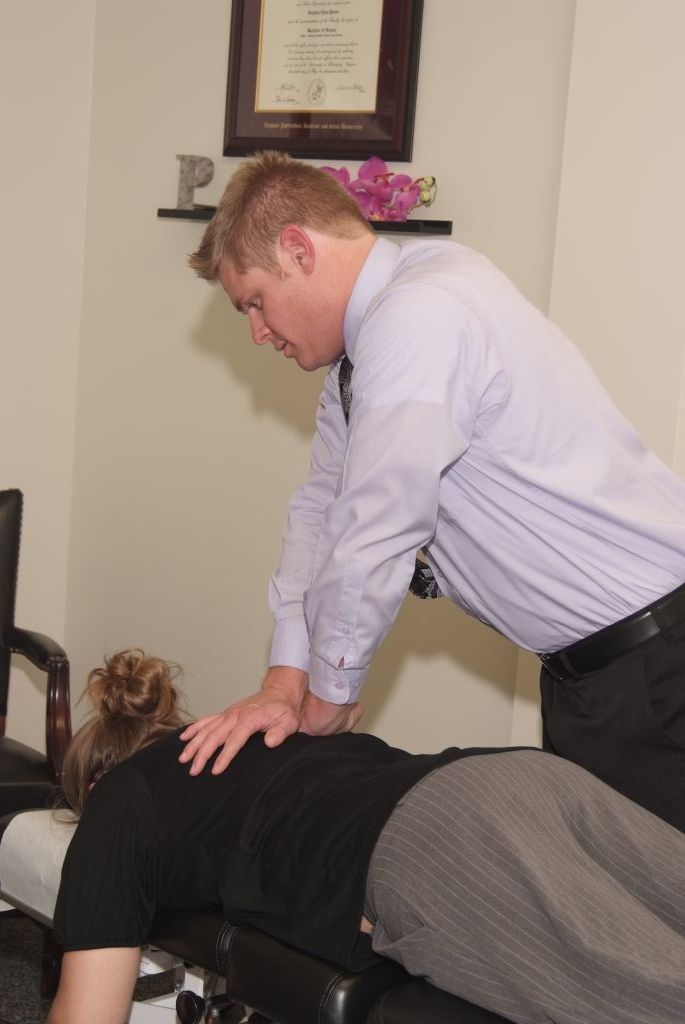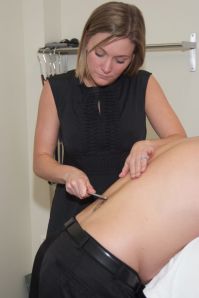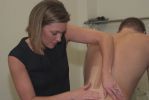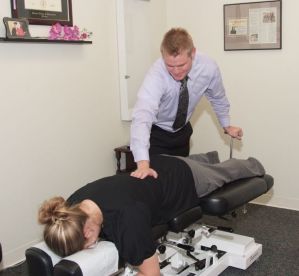Techniques
The Adjustment

A Chiropractic Adjustment or manipulation refers to the process in which the doctor of chiropractic applies a controlled force into a fixated joint. Manipulation is usually delivered with the hands or can be delivered through a specialized tool. The adjustment allows for movement of the previously fixated joint. Correcting the fixation reduces pain and inflammation, reduces muscle spasm and tension, normalizes biomechanics and removes spinal irritation to improve overall health and wellness.
Like the joints of the spine, joints in the extremities can become misaligned, fixated or unstable. Adjustments to extremity joints can restore and enhance joint functioning which can increase the life of the joint and keep wear and tear to a minimum. This is of special interest to athletes who generally demand optimal performance from highly stressed joints. Adjusting a misaligned or fixated joint provides an immediate increase in proper joint range of motion and also supplies the joint with vital nutrients.
The Graston Technique

An innovative, patented form of instrument-assisted soft tissue mobilization that enables clinicians to effectively break down scar tissue and fascial restrictions. The technique utilizes specially designed stainless steel instruments to specifically detect and effectively treat areas exhibiting soft tissue fibrosis or chronic inflammation.
The Graston Technique Instruments (GT Instruments), while enhancing the clinician's ability to detect fascial adhesions and restrictions have veen clinically proven to achieve quicker and better outcomes in treating both acute and chronic conditions, including:
- Rotator Cuff Injuries (shoulder pain)
- Lateral Epicondylopathy (tennis elbow)
- Medial Epicondylopathy (golfer's elbow)
- Tibial Stress Syndrome (shin splints)
- Lumbar Sprain/Strain (back pain)
- Cervical Sprain/Strain (whiplash, neck pain)
- Patellofemoral Disorders (knee pain)
- Carpal Tunnel Syndrome (wrist pain, hand numbness)
- Achilles Tendinopathy (ankle pain)
- Plantar Fascitis (foot pain)
- Trigger Finger
- Post-Surgical and Traumatic Scar Pain
Kinesiotaping

A taping method that involves taping over and around muscles in order to assist and give support or to prevent overuse. Kinesio Tape gives the athlete support while maintaining full range of motion, enabling the individual to participate in physical activity with functional assistance. Through the way in which that tape is applied, it can facilitate, relax or inhibit muscle function. Kinesio Taping is also effective in the removal of swelling, correcting misaligned joints, and supports muscles and ligaments through their full range of motion. Kinesio Taping can be applied to injuries including:
- Rotator Cuff/Shoulder Injuries
- Tennis/Golfer's Elbow
- Any Sprain or Strain
- Postural Disorders
- Carpal Tunnel Syndromes
- Knee Tracking and Tendon Disorders
- Ankle Sprains
- Reduction of Traumatic or Post-Surgical swelling
Cox Flexion Distraction

A doctor-applied, doctor controlled, hands-on, specific contact, patient-focused technique. During a treatment the patient lies prone while the doctor concentrates on vertebral motion one segment at a time. The goal is to reduce4 restrictive effects by decreasing intradiscal pressure to increasing the size of ht intervertebral foramen, and lowering pressure on the dorsal root ganglion and the exiting nerve roots. For the low back, the doctor may use the instrument's caudal (the part the legs lie on) section to allow lateral and circular motion which returns normal motion to the spinal segments and reduces pain. All movements are slow and to patient tolerance.

